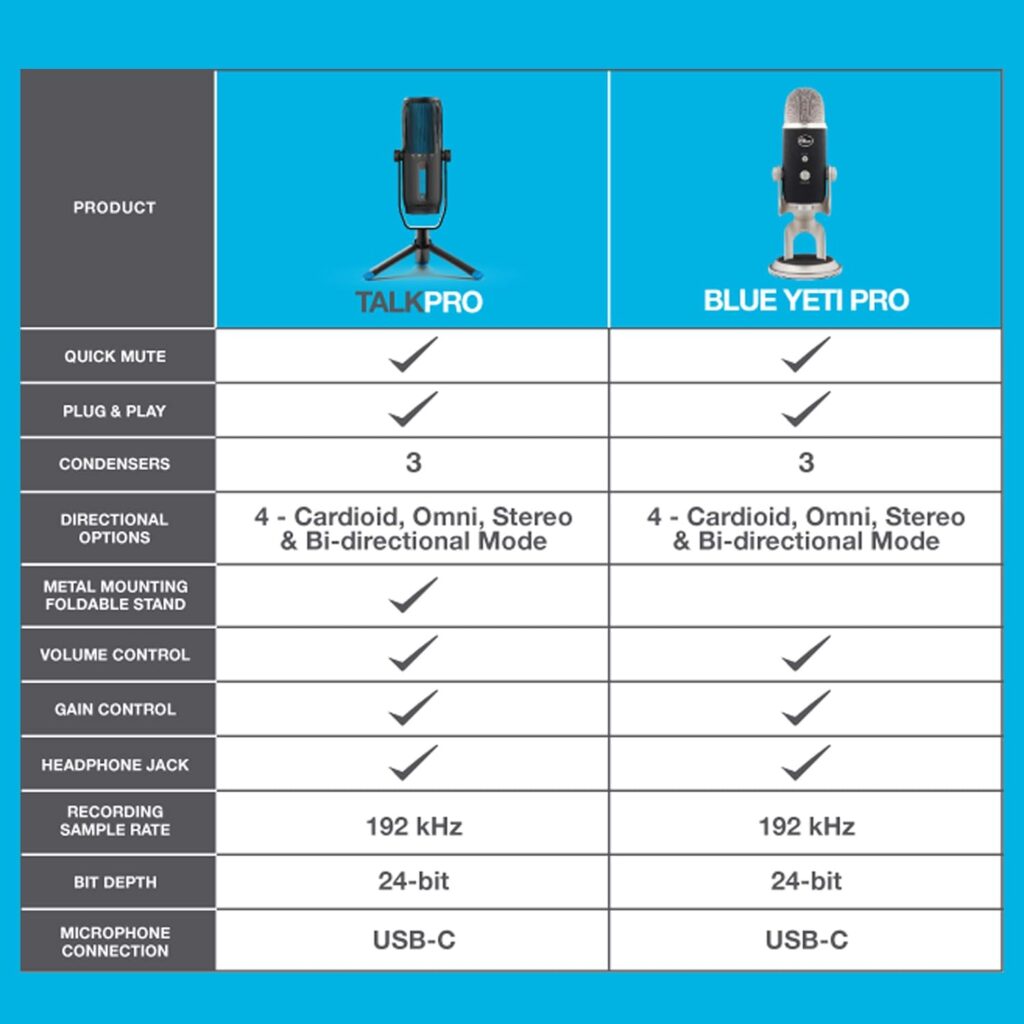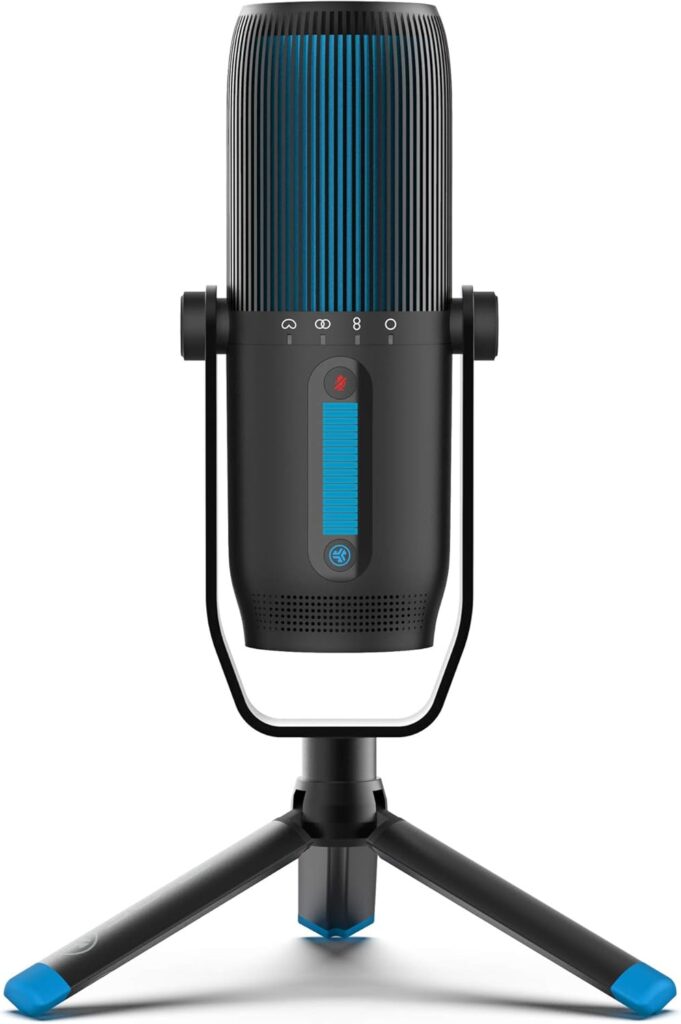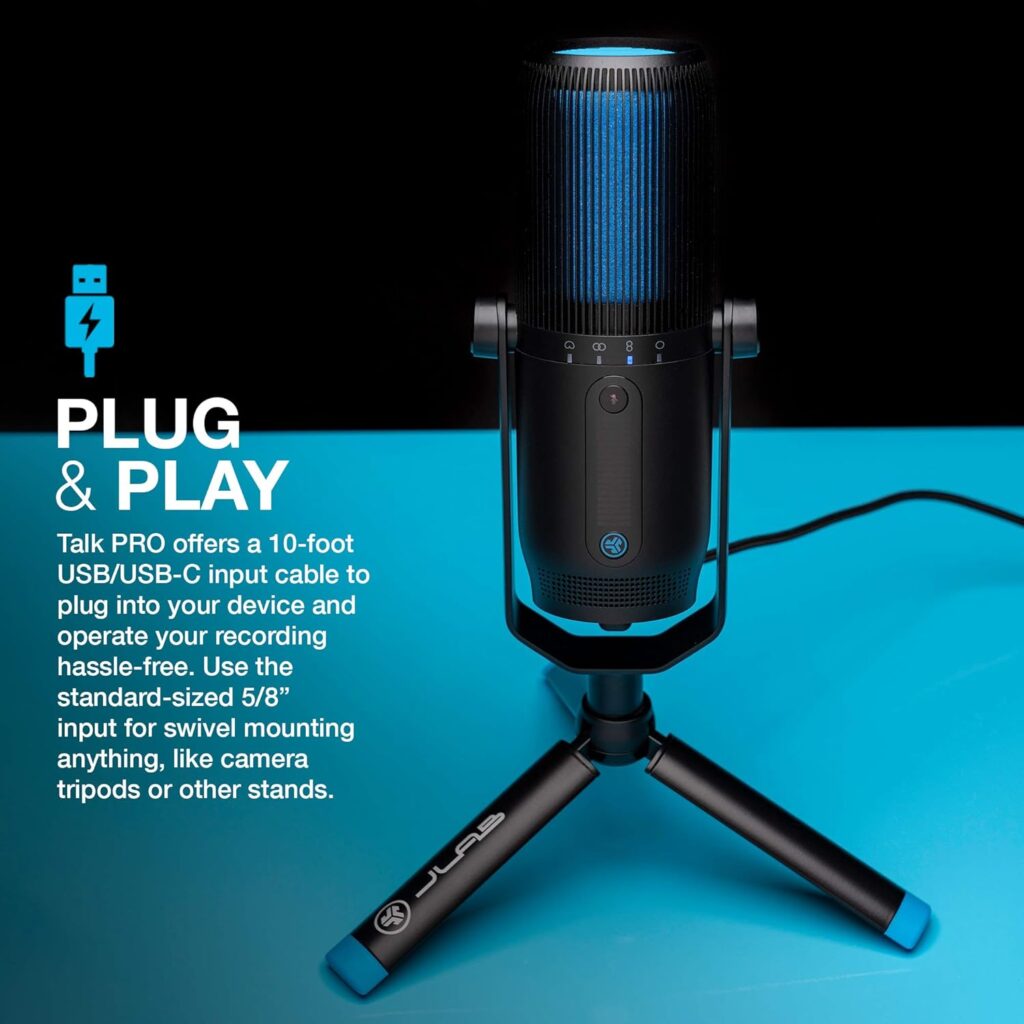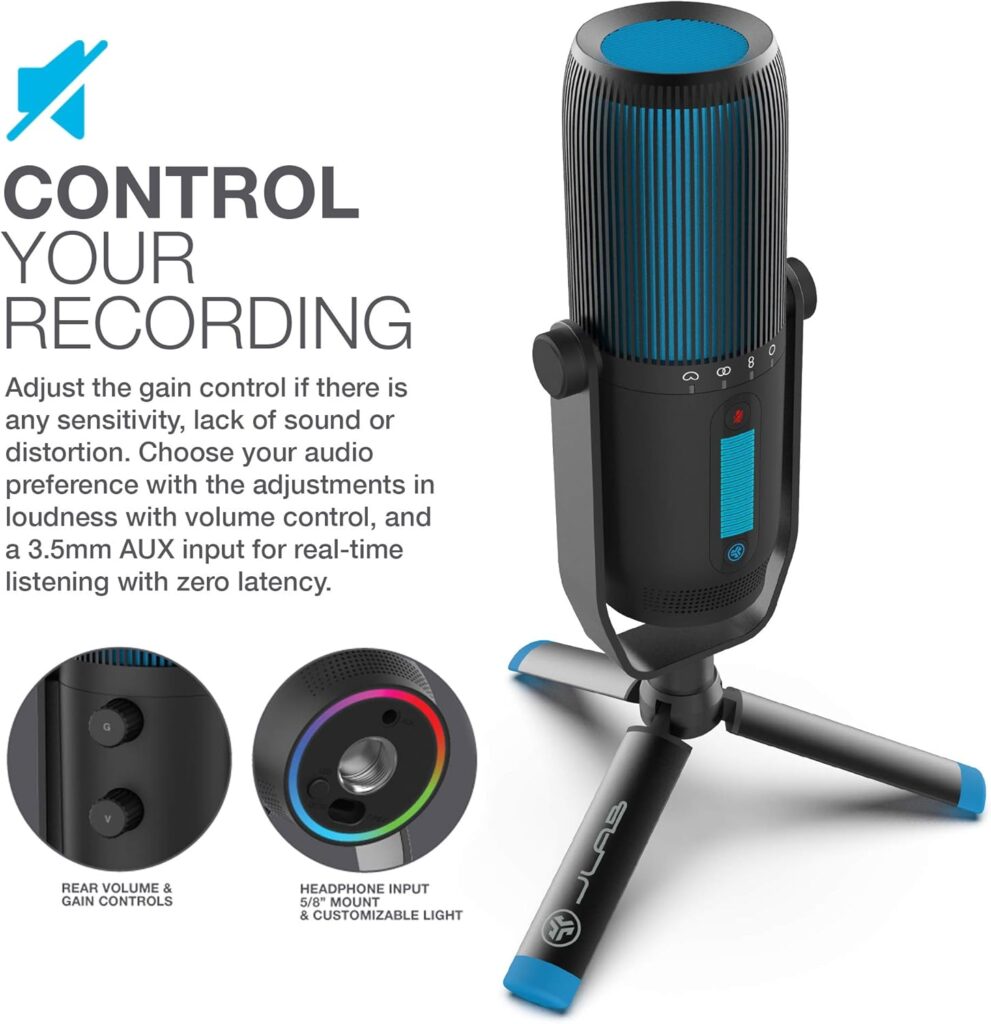JLab Audio Talk Review
In the ever-evolving world of audio recording, USB microphones have become a staple for creators, gamers, podcasters, and remote workers alike. Offering plug-and-play simplicity and high-quality sound without the need for complex setups, these devices cater to a wide range of users. Among the contenders in this crowded market is the JLab Audio Talk, a mid-tier USB microphone from JLab’s Talk series, priced at $99. Known primarily for its affordable headphones and earbuds, JLab ventured into the microphone space with the Talk lineup, aiming to deliver professional-grade recording at a budget-friendly price. In this review, we’ll dive deep into the JLab Audio Talk, exploring its design, features, sound quality, usability, and how it stacks up against competitors like the Blue Yeti Nano. By the end, you’ll have a clear picture of whether this microphone is the right fit for your needs.
JLab Audio Talk Review
The JLab Audio Talk sits comfortably in the middle of the Talk series, flanked by the budget-friendly Talk Go ($49) and the premium Talk Pro ($149). Launched in 2020, this microphone targets users who want more than entry-level performance but aren’t ready to splurge on high-end models. With a sleek design, four directional recording patterns, and a 96kHz/24-bit resolution, the Talk promises versatility and quality for tasks like podcasting, streaming, gaming, and virtual meetings.
At $99, it’s competitively priced against popular USB mics like the Blue Yeti Nano, which also retails for around $99. However, the Talk distinguishes itself with a broader range of recording modes and a unique aesthetic that blends modern simplicity with functional controls. Let’s break down what makes this microphone tick.
Design and Build Quality
First impressions matter, and the JLab Audio Talk doesn’t disappoint in the looks department. The microphone sports a compact, desktop-friendly form factor with a satin black finish accented by blue highlights. Measuring roughly 7.6 inches tall when mounted on its included tripod, it’s smaller and chubbier than its sibling, the Talk Pro, but still feels substantial enough to hold its own on a desk or streaming setup.
The body is primarily plastic, which keeps the weight down—around 14 ounces with the stand—making it portable and easy to reposition. While some might question the durability of a plastic build compared to metal-heavy competitors like the Blue Yeti, the Talk feels sturdy and well-constructed. The metal grille covering the condenser capsules adds a touch of premium flair, and the tripod’s swivel mechanism allows for flexible angling, a nod to old-school broadcast mics.
On the front, you’ll find two dials: a large one for selecting recording patterns and muting, and a smaller one for gain control. LED indicators—blue for pattern selection and green for gain—provide clear visual feedback, which is especially handy in low-light settings. The bottom features a USB-C port for connectivity, a 3.5mm headphone jack for zero-latency monitoring, and a standard 5/8-inch thread for mounting on tripods or boom arms. JLab includes a 6.5-foot USB-C to USB-A cable, which is long enough for most setups but might require an extension for larger desks.
Overall, the design strikes a balance between affordability and aesthetics. It’s not as flashy as some RGB-laden gaming mics, but its understated elegance makes it a versatile addition to any workspace or streaming rig.
Features and Specifications
The JLab Audio Talk is packed with features that punch above its price point. Here’s a rundown of what it offers:
Recording Patterns
One of the standout features is its four directional polar patterns: Cardioid, Omnidirectional, Stereo, and Bidirectional. This versatility sets it apart from the Blue Yeti Nano, which only offers Cardioid and Omnidirectional modes. Here’s how each pattern works:
- Cardioid: Ideal for solo recording, such as podcasting or streaming, this mode captures sound from the front while rejecting noise from the sides and rear.
- Omnidirectional: Perfect for group settings or interviews, it picks up sound equally from all directions.
- Stereo: Designed for recording in left and right channels, this mode suits musicians or ASMR creators seeking a spatial audio effect.
- Bidirectional: Also known as figure-eight, this pattern captures sound from the front and back, making it great for two-person interviews.
Switching between patterns is as simple as turning the front dial, with the LED color indicating your selection. This flexibility makes the Talk adaptable to a variety of recording scenarios, a rare perk at this price.
Audio Quality
The Talk boasts a 96kHz sampling rate and 24-bit depth, delivering studio-quality resolution that exceeds the 48kHz/16-bit specs of many budget mics. The higher sampling rate ensures more accurate sound reproduction, while the 24-bit depth reduces digital noise and offers greater flexibility in post-production. Three condenser capsules power the mic, providing a frequency response of 20Hz to 20kHz and a maximum SPL (sound pressure level) of 120dB. These specs promise clear, detailed audio with a decent dynamic range.
Controls and Monitoring
The onboard controls are intuitive and user-friendly. The main dial doubles as a mute button—press it to silence the mic, and the LED turns red. The gain knob lets you adjust input sensitivity, helping you fine-tune audio levels on the fly. The 3.5mm headphone jack enables real-time monitoring with zero latency, a must-have for live recording or streaming. However, some users note that adjusting headphone volume requires tweaking your computer’s settings rather than a dedicated onboard control, which could be a minor inconvenience.
Plug-and-Play Simplicity
No drivers or software are required—just plug the USB-C cable into your computer, and the Talk is ready to go. It’s compatible with Windows, macOS, and even some mobile devices with USB-C adapters, making it a true plug-and-play solution.
Sound Quality: How Does It Perform?
The proof is in the pudding—or in this case, the recording. To evaluate the JLab Audio Talk’s sound quality, I tested it across multiple scenarios: solo podcasting, Zoom calls, gaming streams, and even some basic music recording. Here’s what I found.
Solo Recording (Cardioid Mode)
In cardioid mode, the Talk shines for solo use. My voice came through clear and warm, with a balanced mix of low and mid-tones. High frequencies were crisp without veering into tinniness, though the mic is sensitive to plosives (like “p” and “b” sounds). A pop filter—sold separately—is a worthwhile investment for polished recordings. Background noise, such as a laptop fan, was audible but easily mitigated by lowering the gain and positioning the mic closer to my mouth (about 6-8 inches).
Compared to the Blue Yeti Nano, the Talk’s cardioid mode feels slightly richer, with a touch more low-end presence. It’s not a night-and-day difference, but the Talk holds its own against its pricier rival.
Group Settings (Omnidirectional Mode)
Switching to omnidirectional mode, the Talk impressed me with its ability to isolate my voice from ambient sounds in a quiet room. During a mock group call, it captured multiple speakers evenly, though it picked up more room noise than I’d prefer in a livelier environment. For professional group recordings, a quieter space or noise suppression software is recommended.
Stereo and Bidirectional Modes
Stereo mode was a pleasant surprise, offering a wider soundstage that’s ideal for capturing instruments or creating immersive audio. I recorded a quick acoustic guitar riff, and while it wasn’t studio-monitor quality, the clarity and separation were impressive for a $99 USB mic. However, gain management is critical here—too much, and distortion creeps in; too little, and the sound feels thin.
Bidirectional mode, intended for two-person setups, was the weakest link. It captured front-and-back audio as promised, but the rejection of side noise wasn’t as strong as I’d hoped, resulting in a muddier mix. For duets or interviews, precise positioning and a controlled environment are key.
Overall Impressions
The Talk delivers excellent audio for its price, especially in cardioid and stereo modes. It’s not flawless—sensitivity to background noise and the need for careful gain adjustment are notable—but it’s more than capable for casual creators and semi-professionals. For music recording, it’s best suited to demos rather than final tracks, where a dedicated XLR mic would outshine it.
Usability and Setup
Setting up the JLab Audio Talk is a breeze. I plugged it into my Windows 11 laptop, and it was instantly recognized as the default input device. macOS users report similar ease, and the lack of proprietary software keeps things simple. The tripod is stable on flat surfaces, and the swivel mount lets you angle the mic precisely. For streamers or podcasters with boom arms, the 5/8-inch thread ensures compatibility with standard mounts.
The controls are straightforward but take a moment to master. The dual-purpose main dial (pattern selection and mute) feels clunky at first, but muscle memory kicks in quickly. The gain knob is responsive, though I wish it had more tactile feedback to distinguish small adjustments. Real-time monitoring via headphones worked flawlessly, with no latency—a boon for live applications.
One quirk: the headphone output defaults to your computer’s speakers unless you manually set it to the Talk in your sound settings. It’s a minor hassle, but worth noting for first-time users.
Comparison to Competitors

How does the JLab Audio Talk stack up against its peers? Let’s compare it to the Blue Yeti Nano and the HyperX QuadCast S, two popular USB mics in similar price brackets.
JLab Audio Talk vs. Blue Yeti Nano ($99)
- Recording Patterns: The Talk’s four patterns (Cardioid, Omni, Stereo, Bidirectional) outnumber the Nano’s two (Cardioid, Omni), offering more versatility.
- Audio Specs: The Talk’s 96kHz/24-bit resolution edges out the Nano’s 48kHz/24-bit, though the audible difference is subtle.
- Sound Quality: Both mics excel in cardioid mode, but the Talk’s fuller low-end gives it a slight advantage.
- Design: The Nano’s metal build feels more premium, while the Talk’s plastic body is lighter and more portable.
- Verdict: The Talk wins for flexibility, while the Nano appeals to those prioritizing build quality.
JLab Audio Talk vs. HyperX QuadCast S ($159)
- Recording Patterns: Both offer four patterns, but the QuadCast S adds a tap-to-mute sensor and RGB lighting.
- Audio Specs: The QuadCast S matches the Talk’s 24-bit depth but caps at 48kHz.
- Sound Quality: The QuadCast S has a brighter, more polished sound, ideal for streaming, while the Talk is warmer and more transparent.
- Design: The QuadCast S’s metal construction and shock mount outclass the Talk’s simpler tripod.
- Verdict: The QuadCast S justifies its higher price with extras, but the Talk is a better value.
Pros and Cons
Pros
- Affordable at $99 with premium features
- Four recording patterns for versatility
- Clear, detailed sound in cardioid and stereo modes
- Easy plug-and-play setup
- Compact and portable design
Cons
- Plastic build may feel less durable
- Sensitive to background noise in some modes
- Bidirectional mode underperforms
- No dedicated headphone volume control
Who Should Buy the JLab Audio Talk?
The JLab Audio Talk is an excellent choice for:
- Podcasters starting out or upgrading from basic mics
- Streamers needing a versatile, budget-friendly option
- Remote Workers seeking better audio for Zoom calls
- Hobbyist Musicians recording demos or experimenting with stereo sound
It’s less ideal for:
- Professional Musicians requiring top-tier fidelity
- Noisy Environments without soundproofing or software filters
- Users wanting a premium metal build
The Bottom Line
The JLab Audio Talk is a compelling entry in the USB microphone market, blending affordability with functionality in a way that few competitors can match. Its four recording patterns, 96kHz/24-bit resolution, and intuitive controls make it a standout at $99, offering more versatility than the Blue Yeti Nano and a lower price than the HyperX QuadCast S. While it’s not perfect—background noise sensitivity and a plastic build are minor drawbacks—it delivers where it counts: clear, reliable audio for a variety of uses.
For creators on a budget who want a step up from entry-level mics without breaking the bank, the Talk is a no-brainer. It’s not just a microphone; it’s a gateway to better sound, proving that JLab’s foray into recording gear is more than just talk—it’s a serious contender. Whether you’re launching a podcast, streaming on Twitch, or simply tired of your laptop’s tinny mic, the JLab Audio Talk deserves a spot on your desk.




